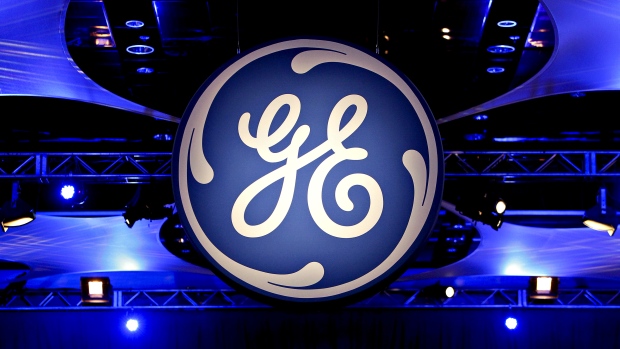Jan 31, 2019
GE jumps most since 2009 as CEO Culp's rescue plan gains steam
, Bloomberg News

Larry Culp’s first appeal to General Electric Co. (GE.N) investors didn’t go so well back in October. This time it’s a different story.
GE soared the most in almost a decade as the new chief executive officer detailed his efforts to reduce the company’s debilitating debt load, fix the ailing power business and ease lingering uncertainties weighing on the shares. GE also announced a deal to settle a Justice Department probe into its defunct subprime-mortgage unit for less than investors had feared.
“We are going to de-lever the balance sheet while we strengthen the underlying operations of the business,” Culp said in an interview Thursday after GE reported fourth-quarter earnings. The company is proceeding with “a level of pragmatism, transparency with respect to where we are and what we’re doing, and how we’re going about addressing our issues.”
The latest moves -- and a lack of nasty surprises in the fourth-quarter earnings report -- buoy Culp’s efforts to pull GE out of one of the worst slumps in its 127-year history. Since taking the helm in October following the surprise ouster of John Flannery, Culp has announced a restructuring of the beleaguered power-equipment unit, replaced key managers and taken steps to separate other businesses into stand-alone operations.
GE jumped 15 per cent to US$10.49 at 11:57 a.m. in New York after climbing as much as 18 per cent, the biggest intraday gain since March 2009. The shares advanced 20 per cent this year through Wednesday, compared with an 11 per cent gain for a Standard & Poor’s index of industrial companies.
That’s a big turnaround from Culp’s first earnings call in October, a few weeks into his tenure, when he slashed the dividend and revealed a US$22 billion charge in the company’s power business. GE fell 8.8 per cent that day, part of a 57 per cent plunge last year.
“This is clearly moving the right way,” said Nicholas Heymann, an analyst with William Blair & Co. “There are definitely signs of accelerating actions to be able to improve not only GE’s liquidity but, more importantly, plans to reduce GE’s leverage and check off the pending unknowns.”
Resolving one question mark, GE agreed in principle to settle the Justice Department’s subprime investigation for US$1.5 billion -- equal to a reserve the company had already set aside. That’s about half of what investors had expected, Joe Ritchie, an analyst at Goldman Sachs Group Inc., said in a note to clients.
Keeping Gecas
Culp pushed back against reports of a possible sale of GE’s jet-leasing business, known as Gecas. Bloomberg reported this month that Apollo Global Management was weighing an offer for the unit, and the Wall Street Journal also has reported on potential suitors.
“I wouldn’t categorically rule it out,” Culp said. “But we have no plans to part with this asset. This is an important part of our company.”
While he tamped down expectations on that deal, he’s going bigger on another. Culp said GE would “monetize up to just under 50 per cent of our health-care business,” while analysts had expected a smaller portion of the unit to be sold in a planned spinoff.
That effort, along with other pending sales, could generate US$50 billion to help reduce GE’s leverage, Culp said.
Investors looked past weak GE performance in the fourth quarter, which Heymann said is “at the outer edges of relevance” until the broader turnaround plan takes shape. Earnings of 17 cents a share missed the 22-cent average of analyst estimates compiled by Bloomberg. Sales rose 5.3 per cent to US$33.3 billion, narrowly exceeding expectations of US$32.3 billion.
Power Problems
A 25 per cent sales drop in GE Power served as a reminder of the depth of the company’s challenges in one of its marquee divisions. The poor performance was expected after a rough 2018, when the business was hit by a market slump, huge writedown and technical troubles with some of its gas turbines.
“Power has not stabilized” and the division’s fourth-quarter loss worsened from the prior three-month period, John Inch, an analyst with Gordon Haskett Research Advisors, said in a note. GE Capital was another weak spot, he said.
GE didn’t offer a profit forecast or much forward-looking commentary. Culp said on a conference call with analysts that a “more detailed” outlook will have to wait until the near future.
“The lack of any 2019 guidance is also surprising and suggests uncertainty in the near-term path,” Ritchie said. On the other hand, he said, GE’s industrial cash flow was better than expected.
The mortgage settlement puts to rest one of the key concerns that has weighed on the shares. But GE is still facing separate investigations into its accounting by the Justice Department and the Securities and Exchange Commission. The company also is contending with a lawsuit from shareholders, elevated debt levels and a slumping power-equipment business.
“It’s a start,” Culp said about his first few months at the helm, “but we have much more work to do.”


